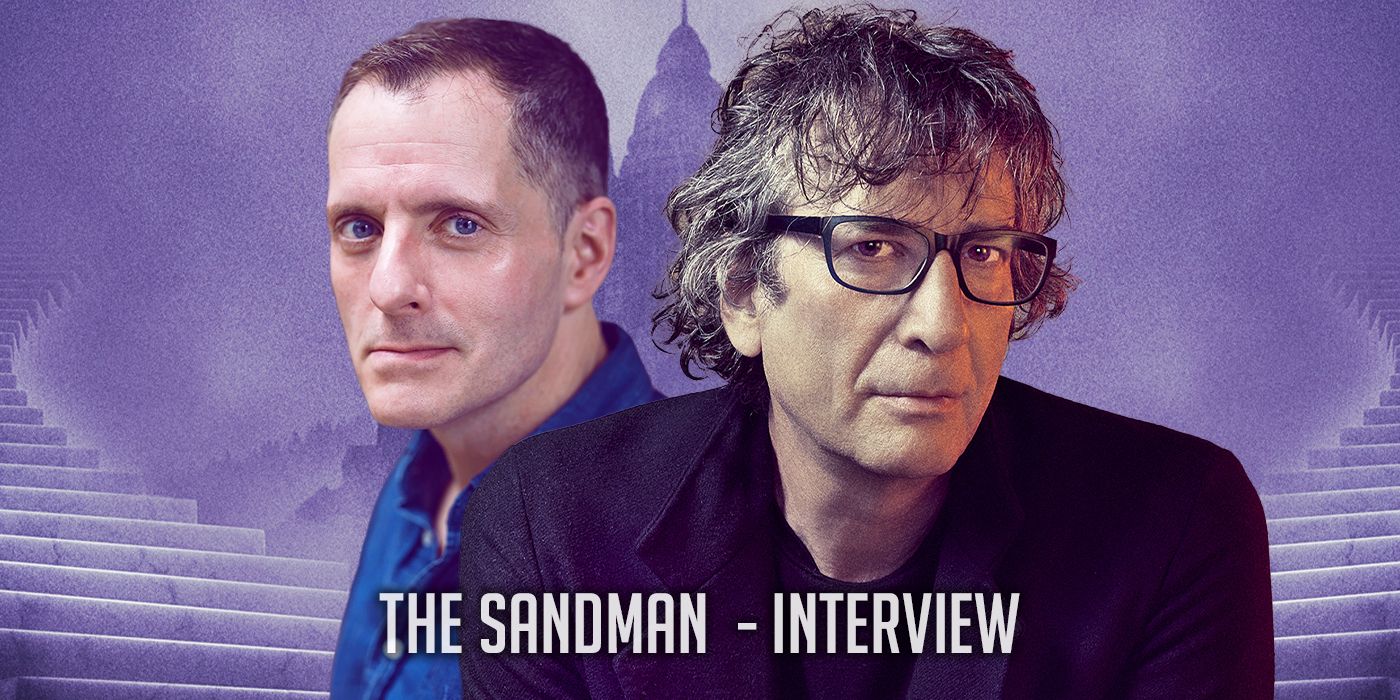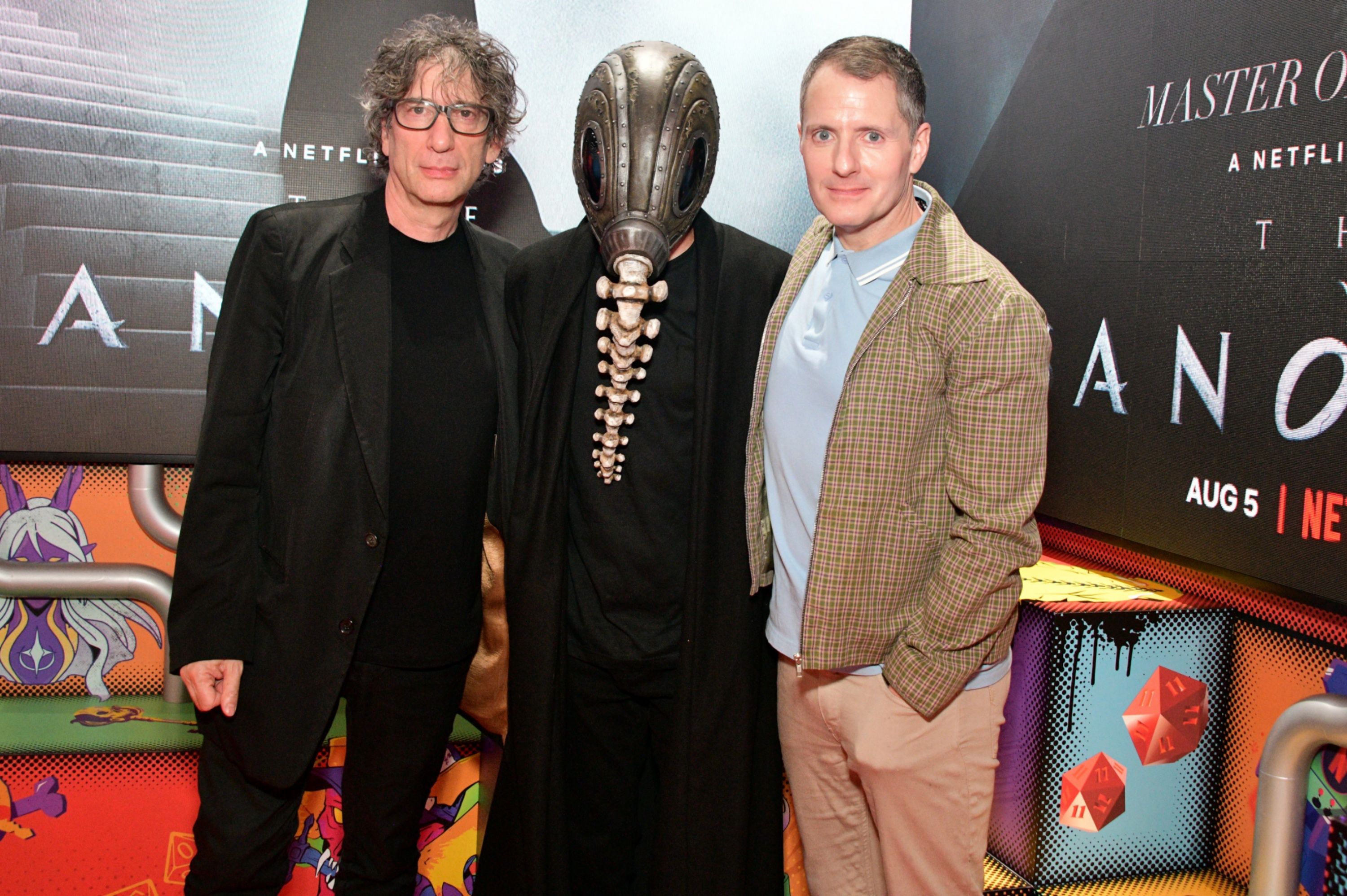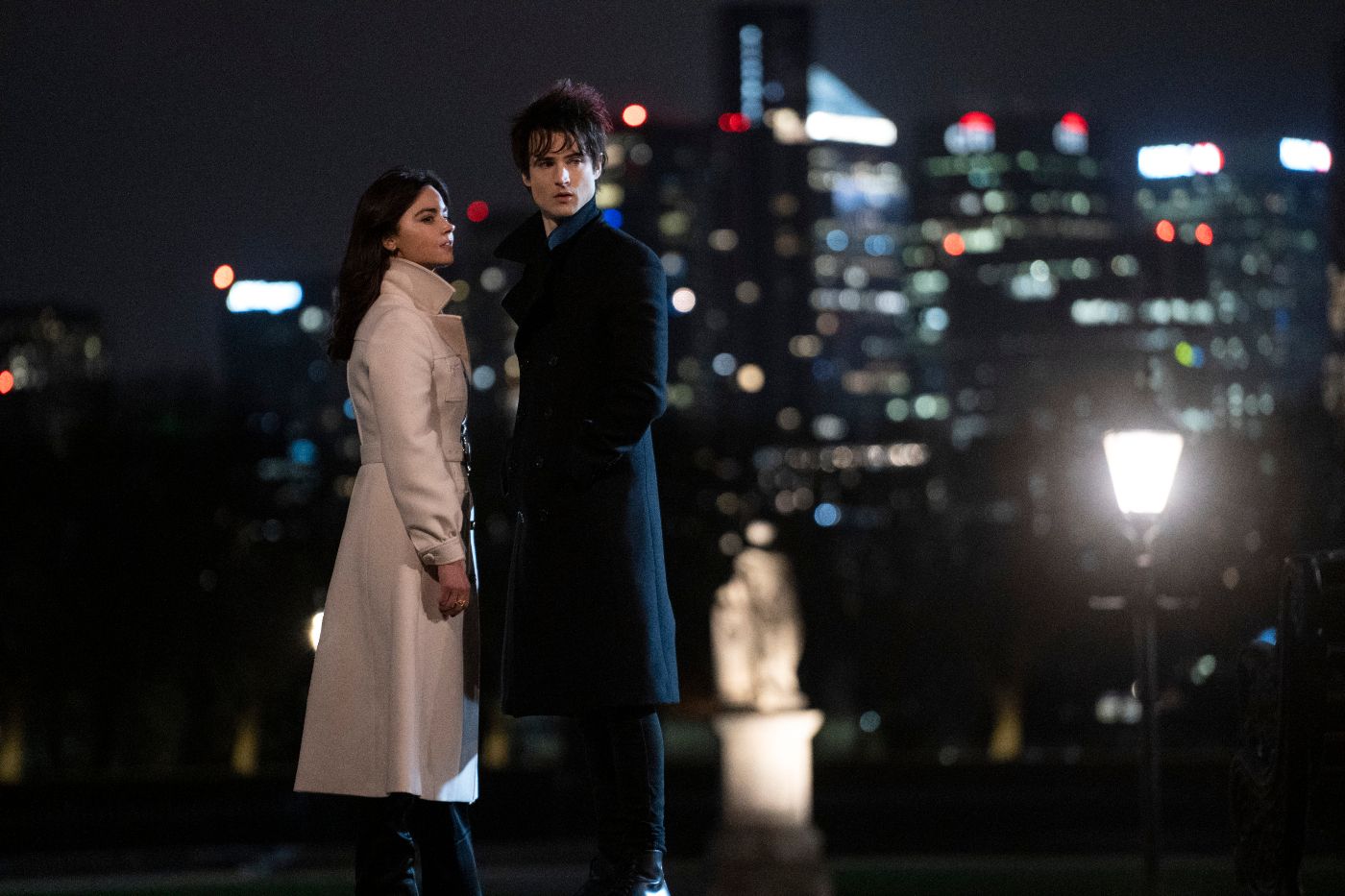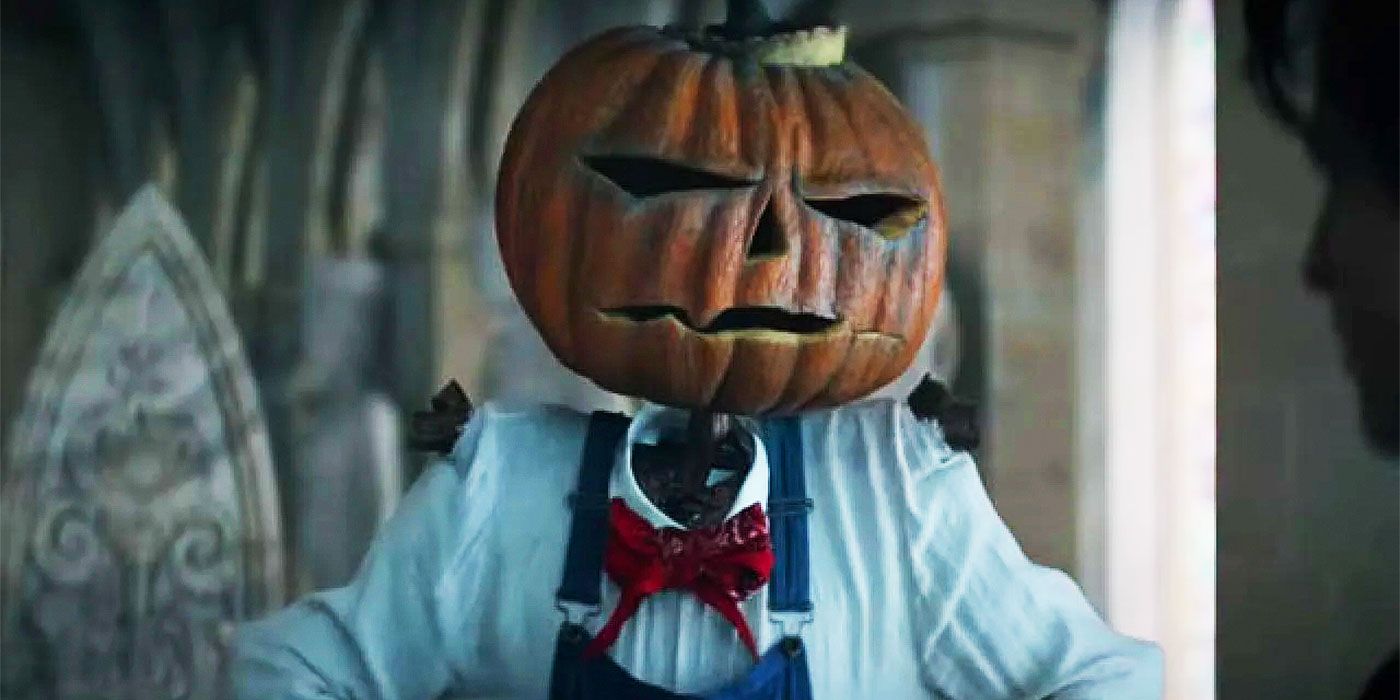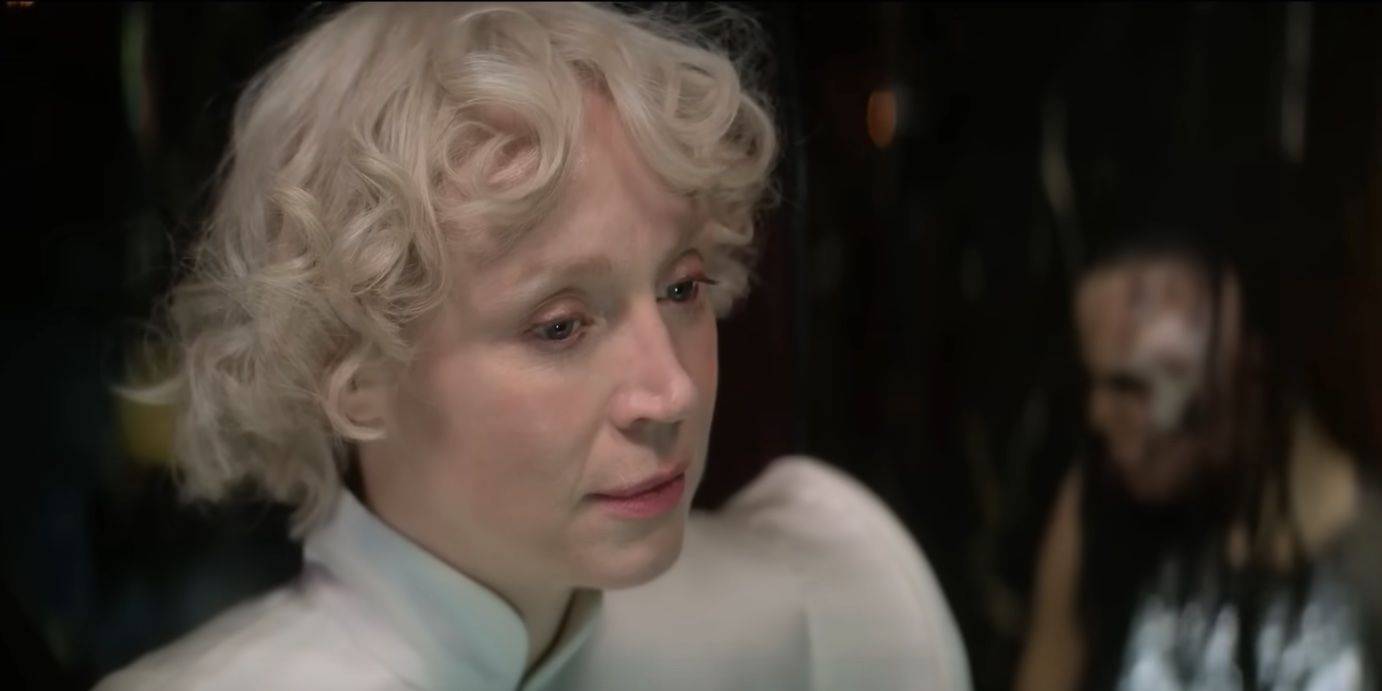[Editor’s note: The following contains spoilers for The Sandman.]After more than three decades and many failed attempts, the beloved award-winning DC comic series The Sandman has finally been brought to life as a 10-episode drama for Netflix, developed and executive produced by author Neil Gaiman, showrunner Allan Heinberg, and David. S. Goyer. Set in a world where the Master of Dreams, aka The Sandman (Tom Sturridge), must travel across different worlds and timelines to restore the order that devolved while he was held prisoner for over a century, he's required to visit old friends, foes and family from his vast existence, in order to re-balance the dreaming and waking worlds.
During this interview with Collider, Gaiman and Heinberg talked about the importance of making sure that The Sandman was done right when it was finally made, why it felt different this time, the responsibility of taking this project on as a showrunner, why it was important to have real tangible sets for the actors to work in, what they were most focused on bringing to life, the spinoffs they would want to watch, and why they felt it was necessary to add an emotional gut punch that wasn’t in the comics.
NEIL GAIMAN: I have to say, of all the junkets that I’ve done over the years, and I have done many of these, I think I’m enjoying this one the most. Very often, you wind up enduring these things.
Collider: It must be extra nice when you’ve been waiting so long to actually see this adapted in some form.
GAIMAN: You know what’s nice is that, mostly, I wasn’t waiting, in that there was never any sense from me that I would rather see a Sandman, than to see it done right. I grew up in an era where I saw the Dr. Strange movie from the 1970s. I went and saw Howard the Duck, and I loved Howard the Duck. And Howard: A New Breed of Hero just broke my heart. I’m absolutely a believer in how I would much rather no bad thing gets made, then you just get something out. I would’ve waited another 30 years. I could have been in my nineties, as long as it meant that we got the real Sandman made right and that it felt like Sandman. I’m just happy that it happened now.
Did it feel different this time, from the beginning? Did things feel different than the other times?
GAIMAN: Yes, because every other time, I was that guy who wrote the comics, but I was to be kept at arms’ length, shown terrible scripts on severance, and ignored. That was my function. This was the first time that they’d ever come to me. David S. Goyer talked to Warner Bros., and then David and Warner came to me and said, “We now know that you’re a showrunner. You’ve done Good Omens. You’ve won awards as a scriptwriter. We know that you know how to do this. Please, can we do this together?” It was the first time anybody had actually invited me to become part of the team making Sandman. And then, David suggested Allan [Heinberg]. Allan came to dinner on a Friday night, proud of owning a page from Sandman, which I had signed for him in 1996, and by Monday morning, the three of us were pitching to Netflix and every other major streamer, and they were pitching to us why Sandman belonged on their network. A week later, Sandman was at Netflix.
Allan, what’s the responsibility feel like for you to take on this? Knowing the history of it and being a fan of the comics yourself, what does that responsibility feel like?
ALLAN HEINBERG: It was made easier by the fact that I’m that fan. It was a pleasure because I was able to make the show, as a fan, that I would wanna see. It wasn’t as if I had to learn the show and learn the fandom, and do all of that. I was as protective of the property as anybody who isn’t Neil Gaiman. Every decision, creatively, was dictated by wanting to be as true to, if not literally the comic book page, the spirit of the creative decisions that Neil had made 30 plus years ago, as possible. There was never a moment where I felt like I needed to leave my mark on Sandman, or that this was, in any way, my Sandman. I really wanted to deliver The Sandman, as best I could. And with Neil and David at my side, and we had an incredible group of writers and department heads, and everybody on every level, the whole time we were making the show, for the last three years, has had that same goal. Here is this piece of art that we all love, and let’s do everything we can to bring it to the screen, alive and well.
There is a version of this show that could have been in a room with green screens and could have all been created later.
HEINBERG: Sure.
So, why was it important to do it this way? Watching it, you feel the difference without maybe being able to necessarily understand exactly why, but why was that important for you guys?
GAIMAN: I think that it’s really interesting because you get a different kind of performance. There’s a weird relationship between Sandman and theater, all the way through. I think Tom [Sturridge] got the part, partly because he’d done a lot of Broadway. He’s a fabulous Shakespearean actor and he knew how to land the lines in the way that a lot of actors with less experience just didn’t. And I think the theatrical experience is part of Sandman, definitely with episode five in the diner. That was actually really shot and rehearsed like a play. It was shot in order, and you can see and feel that, in the way that it lands.
HEINBERG: And we were all there the whole time, for every shot. We made a decision, fairly early on, that whenever we could do something practically, we would. The choice was always to do the environment practically first, and then use the effects only as an enhancement. It also kept us on budget. It was a creative decision, from the very beginning, to make it as grounded as possible because so much of the show takes place in realms that are not quite as grounded as our own.
Was there anything that you were most excited about getting to bring to life, or most nervous or scared about getting to bring to life?
HEINBERG: There were so many of those.
There’s so much visual imagery.
HEINBERG: So much. There are these iconic issues of the comic book series. We knew we had to do Hell, which was a tall order. We knew we were doing a cereal convention, which was also a tall order. The diner was particularly terrifying for me, just because I had to find a different way to tell that story and remain true to it. 24 Hour Diner, Men of Good Fortune and The Sound of Her Wings are the issues of the comic that everyone who knows Sandman knows by heart. It was a daunting challenge, but it was also just a tremendous fanboy moment for me.
GAIMAN: You look at Dream meeting Hob Gadling in the pub every hundred years, and you start to reduce that to, “Okay, well, who did what in this?” You look at the production designers, the costume designers, and everybody, and they went above and beyond. Nobody ever gets to do half an hour of television with eight sets and completely re-costuming everybody, every three or four minutes. We did and we got something magical out of it, but that something magic was absolutely grounded in Tom and Ferdy [Kingsley]’s performances, and special guest star, Jenna Coleman as Lady Johanna Constantine.
I love an ensemble where you could have a spinoff with any of these characters and it would be fascinating. I’m rooting for the Lucifer fashion series because that would be amazing. Is there a character that you would love to see a one-off or a spinoff for?
GAIMAN: I don’t want to make, but I just want to watch the Jenna Coleman, Joanna Constantine fighting demons, getting laid, and causing trouble in the London underworld series. I would watch that forever. I can’t imagine that not being a joy. I’d love to see more Death (Kirby Howell-Baptiste). I’d love to see ways of doing the Death miniseries. But also, there are characters who I just fell in love with that I’m almost sad I didn’t write more for. I’d love to see more Cain (Sanjeev Bhaskar) and Abel (Asim Chaudhry). They’re marvelous. Asim Chaudhry’s Abel is one of the great, weird comic creations. You just want to hug him. You love him. And he’s really built on that character. What he brought to it makes him so much more than the Abel in the comics.
HEINBERG: He’s incredibly tender and vulnerable and sweet with Gregory. I would add The Corinthian to the list. I could watch that spinoff.
The scene with Cain and Abel and the gargoyle, Gregory, is like one of those dreaded dog scenes in a movie. It was so hard to watch. How did you figure out the way you wanted to handle that?
HEINBERG: That was a tough one because, in the comics, it isn’t Gregory. It’s the Letters of Creation. He’s basically awarded them, their real estate deeds, in the Dreaming, and in those deeds, in the comic, is a piece of his essence, his power, that he wants back. It wasn’t an emotional transaction, and we wanted people to feel how painful this is for Dream.
GAIMAN: We needed to break everybody’s heart, early on, to make them care about the Dreaming.
HEINBERG: And to show that he cares too. It’s as hard for him as it is for them, if not harder, in some ways. And the gift of Goldie afterward shows that Dream has got this really big heart. That was why we did that.
It was so beautifully done, even though I hated you completely for it.
HEINBERG: We hated ourselves for doing it. I remember the moment in the room where it was like, “Gregory? We can’t do that, can we?” It was tough for everybody.
Job well done, but I was very upset about that.
GAIMAN: We are very, very lucky, in that we get this astounding cast, who then fell in love with what they were doing. They gave us more than even we would’ve dreamed.
The Sandman is available to stream at Netflix.

